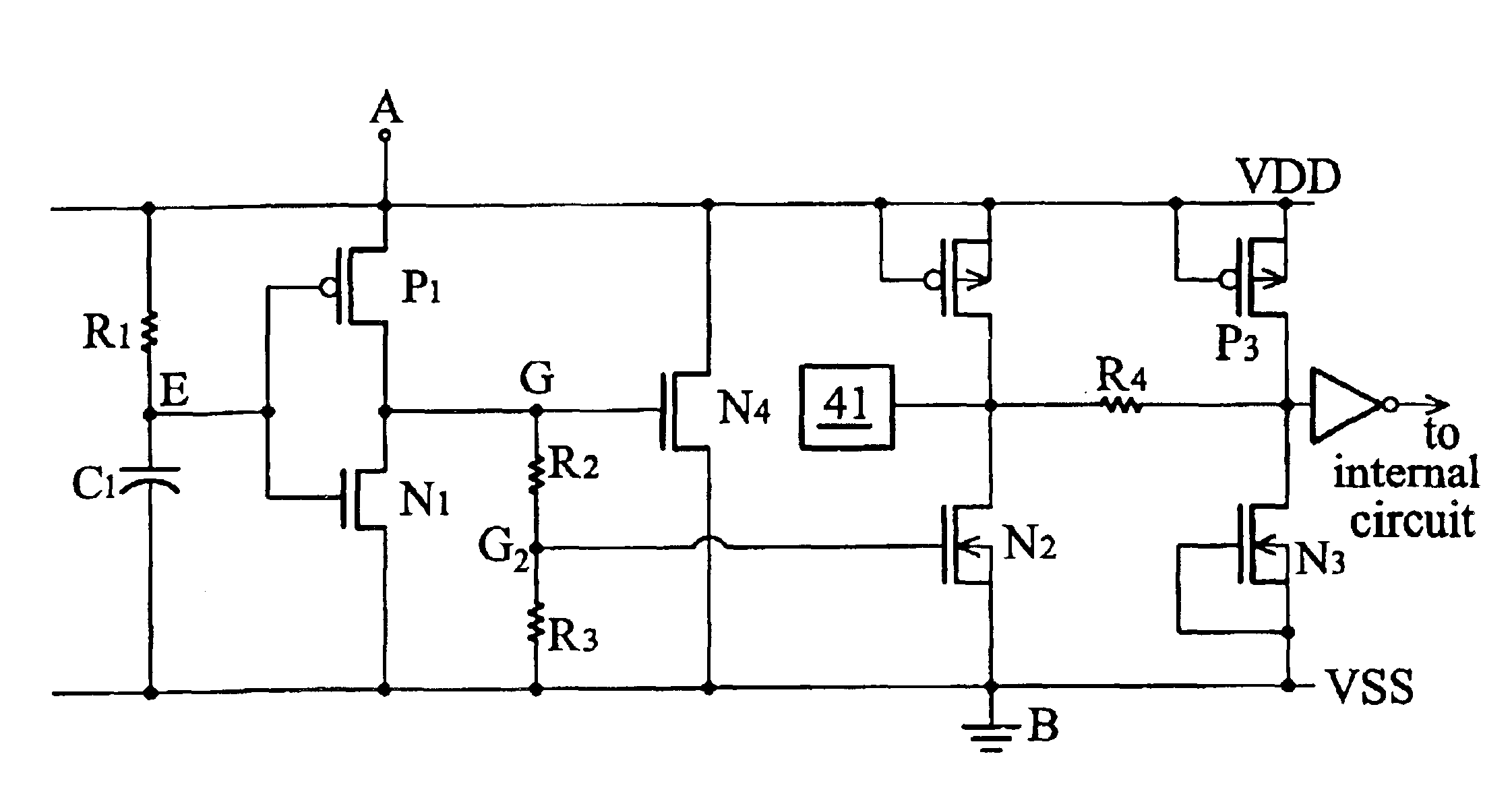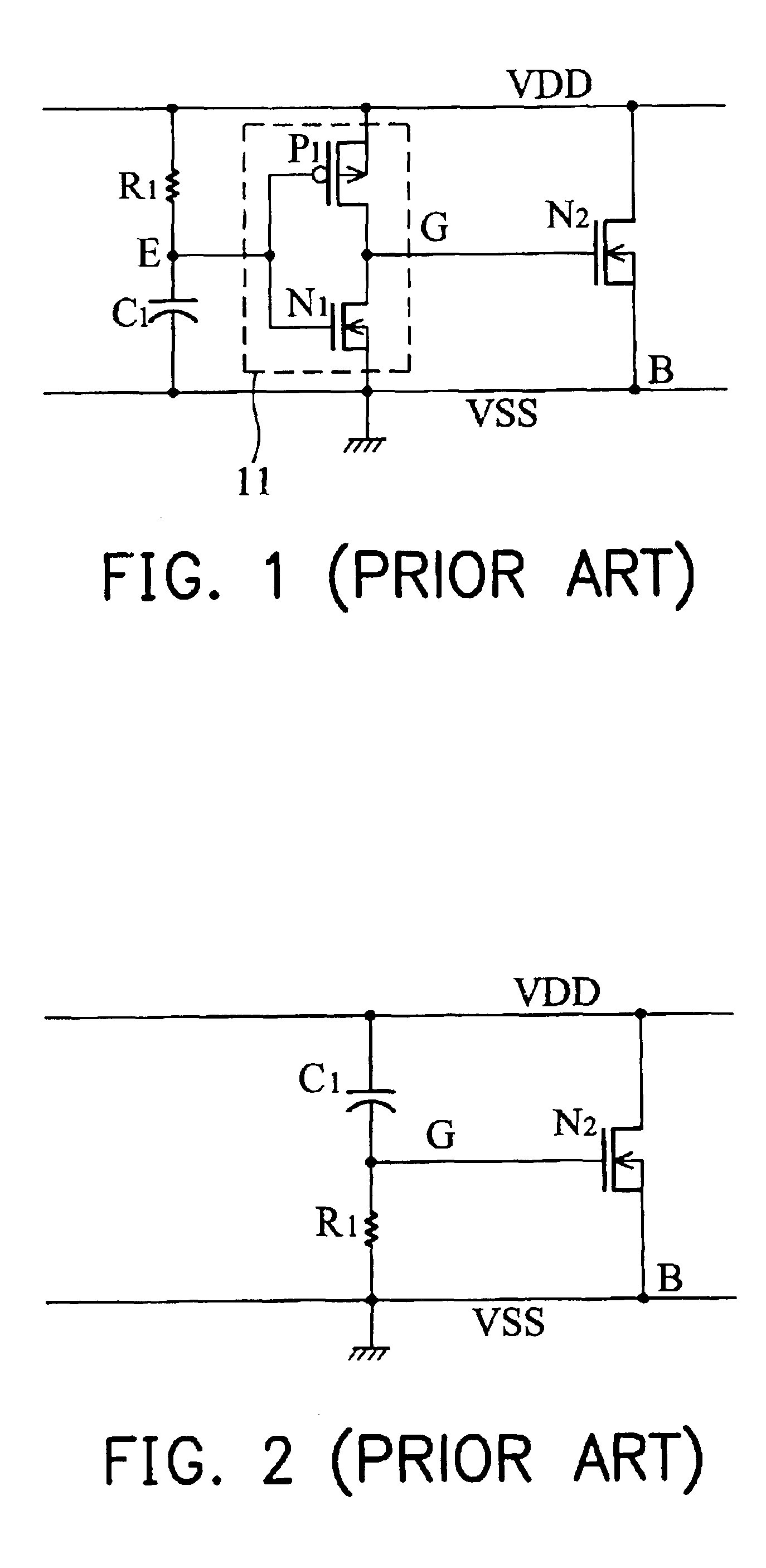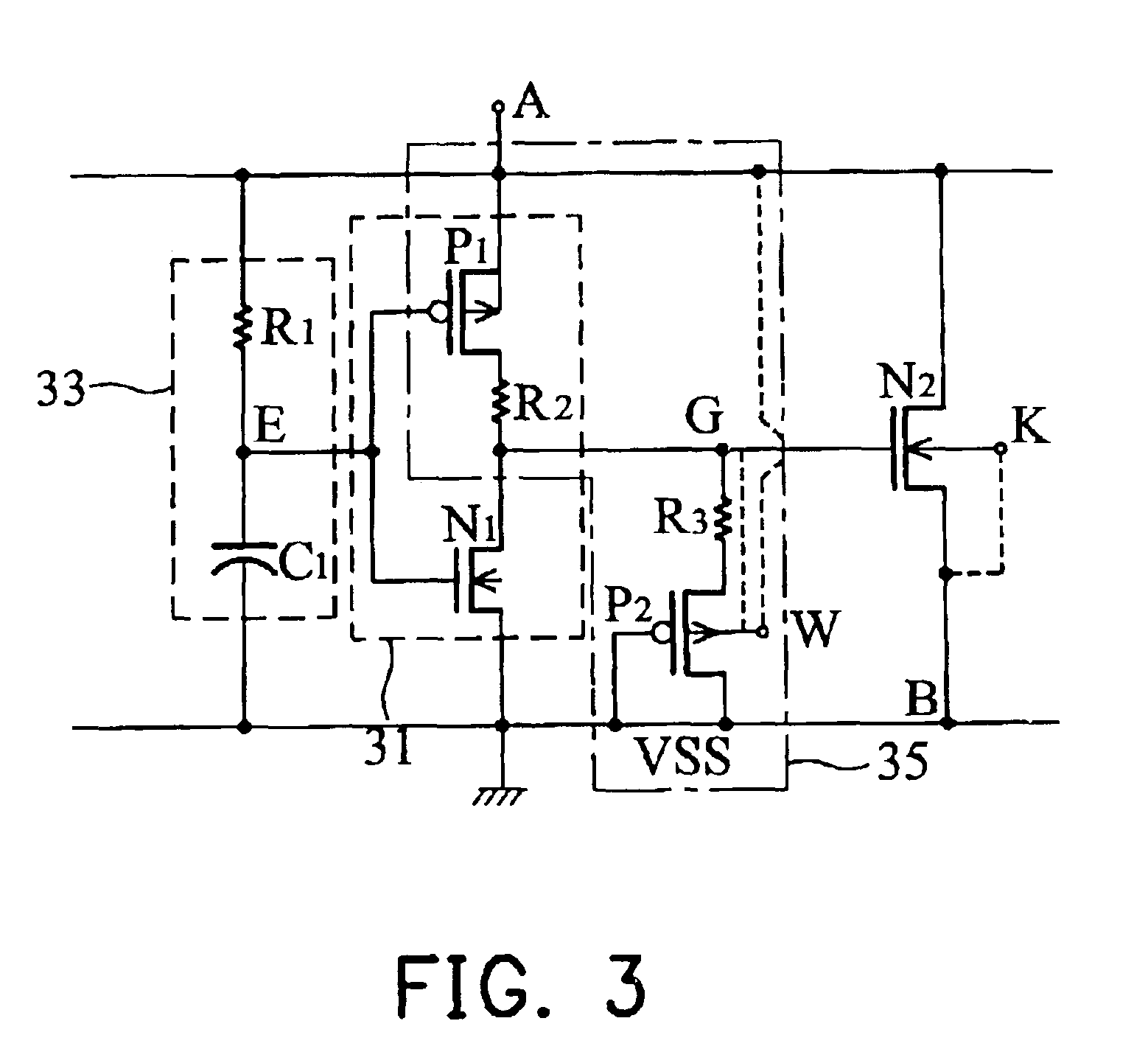Gate-coupled MOSFET ESD protection circuit
- Summary
- Abstract
- Description
- Claims
- Application Information
AI Technical Summary
Benefits of technology
Problems solved by technology
Method used
Image
Examples
first embodiment
[0033]FIG. 3 is a diagram showing an ESD protection circuit according to the invention. A gate-coupled MOSFET ESD protection circuit provides an ESD path from a node A to node B when an ESD pulse voltage applied to the node A. The circuit comprises a timing-control circuit 33 composed of a resistor R1 and a capacitor C1, a voltage divider 35 composed of transistors P1 and P2 and resistors R2 and R3, and a N type shunt transistor N2. The timing-control circuit 33 outputs a low voltage at the node E when the ESD pulse voltage is applied to the node A. The voltage divider 35 outputs a voltage divided from the ESD voltage at the node G when activated by the low voltage output from the timing-control circuit 33. The shunt transistor N2 has a drain coupled to the node A, a source coupled to the node B and a gate coupled to the voltage divider 35, and enters into a snapback to provide the ESD path by the drain and gate receiving the ESD and the voltage at node G when the ESD voltage is app...
second embodiment
[0041]FIG. 4A is a diagram showing an ESD protection circuit according to the invention. This is an alternative circuit modified from the one shown in FIG. 3. The transistor P2 is replaced by the resistor R3 and the transistor N1 is removed. The voltage dividing ratio is
VG / VA=R3 / [RON(P1)+R2+R3]
which is preferably from {fraction (1 / 15)} to ⅗ so that the gate voltage of the transistor N2 can range from 1 to 2 volts, 0.5 to 2.5 volts or 0.5V to half of the voltage at the node A.
third embodiment
[0042]FIG. 4B is a diagram showing an ESD protection circuit according to the invention. This is an ESD protection circuit providing ESD paths from more than one node (IC pins or power bus) to the VSS power bus. When the ESD event occurs, the transistor N2 provides an ESD path from the pad to the VSS power bus by entering into the snapback while the transistor N4 provides an ESD path from the VDD to the VSS power bus by being turned on.
[0043]When a positive ESD event occurs on the VDD power bus, the ESD pulse voltage is divided by the voltage divider with a voltage-dividing ratio of VG1 / VA=[R2+R3] / [RON(P1)+R2+R3], received by the gate of the transistor N4 and directly turns on the transistor N4. When a positive ESD event occurs on the pad, the ESD pulse voltage is coupled to the VDD power bus, which turns on the transistor N4 and applies a voltage divided from the ESDF pulse voltage with a ratio of VG2 / VA=[R3] / [RON(P1)+R2+R3]. This reduces the triggering voltage of the transistor N2...
PUM
 Login to View More
Login to View More Abstract
Description
Claims
Application Information
 Login to View More
Login to View More - R&D
- Intellectual Property
- Life Sciences
- Materials
- Tech Scout
- Unparalleled Data Quality
- Higher Quality Content
- 60% Fewer Hallucinations
Browse by: Latest US Patents, China's latest patents, Technical Efficacy Thesaurus, Application Domain, Technology Topic, Popular Technical Reports.
© 2025 PatSnap. All rights reserved.Legal|Privacy policy|Modern Slavery Act Transparency Statement|Sitemap|About US| Contact US: help@patsnap.com



